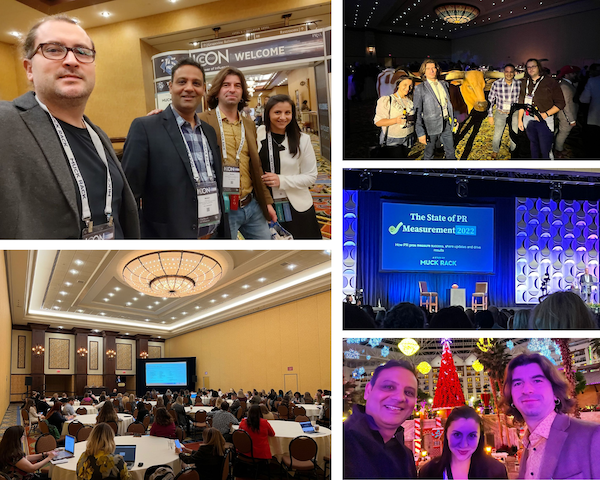In the dynamic realm of public relations (PR), the transformative power of Public Relations Software as a Service (PR SaaS) is reshaping the very foundations of the industry. This revolution represents a shift from traditional PR practices to a technologically advanced approach that aligns seamlessly with the digital age.
Old PR vs. New PR: The Evolution of Communication
The traditional PR landscape relied predominantly on established media outlets such as newspapers, television, and radio to disseminate messages to a mass audience. While these mediums had their merits, they often lacked real-time feedback and the ability to target specific audience effectively. In contrast, modern PR thrives in a digital ecosystem where instantaneous communication is the norm. Social media platforms, content-rich websites, email marketing, podcasts, and webinars have become powerful tools for engaging audiences in real-time. PR professionals now have the ability to craft tailored messages and monitor their impact in ways that were unimaginable just a few decades ago.
The Expanding Media Mix: Then and Now
The media mix of yesteryears was characterized by a handful of traditional channels. Today, PR professionals navigate an intricate web of digital channels, each with its unique characteristics and audience behaviours. It is no surprise that PR teams today work closely with social media, content marketing, and advertising teams.
Social media platforms, including Facebook, X (formerly Twitter), Instagram, and LinkedIn, allow brands to engage with consumers directly and build communities around their products or services.
Email marketing has evolved from simple newsletters to personalized, automated campaigns that nurture leads and drive conversions. Company websites serve as central hubs for disseminating information, while blogs and content marketing establish thought leadership and provide value to audiences. Multimedia content in the form of videos, podcasts, and webinars enables brands to convey complex messages in engaging formats.
The Critical Role of Technology in PR
The indispensable role of technology in PR cannot be overstated. According to the 2022 membership survey by AMEC (International Association for Measurement and Evaluation of Communication), a resounding 67% of respondents agree that embracing new technology is imperative for their business/organization to not just survive but thrive in today’s fast-paced environment.
Developments such as AI-driven chatbots, exemplified by innovations like ChatGPT, underscore the critical importance for PR professionals to remain abreast of technological advancements. These cutting-edge tools empower PR practitioners to engage with audiences in real-time, providing immediate responses and valuable insights. As technology continues to reshape the PR landscape, embracing these innovations becomes essential for effective communication and maintaining a competitive edge.
Understanding PR SaaS: A Catalyst for Change
At the forefront of this technological evolution stands PR SaaS, a suite of cloud-based software solutions designed for PR professionals. PR SaaS platforms encompass a wide range of functionalities, from media monitoring and analytics to influencer identification and crisis management.
These platforms empower PR teams to streamline their workflow, gain real-time insights into media coverage, and identify emerging trends within their industry. They offer automation capabilities for tasks such as media list building, press release distribution, and social media monitoring. PR SaaS acts as a force multiplier, allowing PR teams to accomplish more with greater efficiency.
Why PR SaaS Matters
The adoption of PR SaaS is paramount in the modern PR landscape for several reasons:
Efficiency: PR SaaS automates routine tasks, freeing up PR professionals to focus on strategic thinking and relationship building.
Data-Driven Insights: These platforms provide data-driven insights that guide PR strategies and help measure the impact of campaigns.
Crisis Management: PR SaaS equips organizations with tools to effectively manage and respond to crises in real-time, safeguarding brand reputation.
Media Monitoring: It enables comprehensive media monitoring across traditional and digital channels, ensuring all relevant content is captured.
Competitive Advantage: Organizations that embrace PR SaaS gain a competitive edge by staying agile and responsive in the dynamic media landscape.
The Promise of PR SaaS
In essence, PR SaaS is the future of PR. It represents the integration of technology into every facet of public relations, from media monitoring and influencer engagement to data-driven decision-making. As technology continues its rapid advancement, PR SaaS is evolving alongside, ensuring that PR teams maintain their competitive edge.
At Ninestars, we are working with brands that are aligned to the tech-driven transformation of PR. We are helping global teams to leverage our SaaS offering to create results high on efficiency and effectiveness. Interested in discovering how Ninestars is shaping the future of PR? Get in touch with us today to schedule a demo of our suite of PR SaaS solutions and unlock new possibilities for your PR initiatives.











